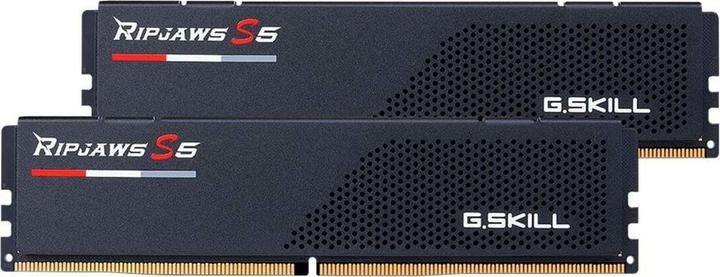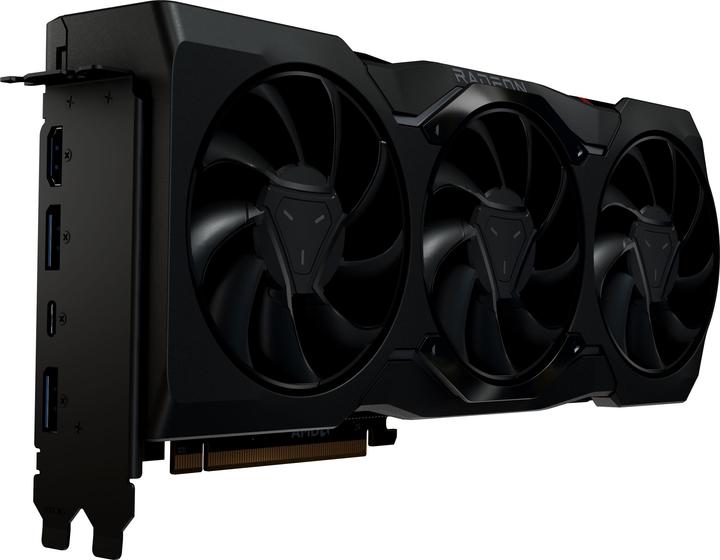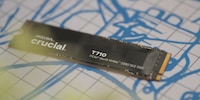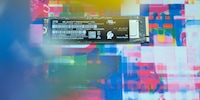

The Crucial T500 SSD seems good, but has a glaring weakness
The T500 from Crucial is the fastest PCIe 4.0 SSD I have tested to date. At least when it's empty. Unfortunately, the high write speed drops sharply from about a third full, which is why I cannot recommend it.
Only two years after PCIe 4.0 was launched with AMD's AM4 platform, Crucial completed the switch from PCIe 3.0 to 4.0. The manufacturer is now retiring the P5 Plus from 2021 and is launching the T500 instead. At the beginning of testing, I was completely convinced by it, as it clearly outperformed its predecessor and the competition in some cases. Disappointingly, it gives up this lead again when the SLC mode is exhausted. A weakness that costs it my purchase recommendation.

you can find all models of the T500
Features and specifications
Crucial relies on the new Phison PS5025-E25 controller for the T500. It is the only SSD with it to date. The SSD with M.2-2280 form factor is connected via PCIe 4.0. NVMe is used as the software protocol.
According to the manufacturer, the sequential read speed is 7400 megabytes per second (MB/s), while the sequential write speed is around 7000 MB/s. Micron 232-layer 3D TLC is used for the NAND memory. NAND is a non-volatile memory technology that does not require electricity to store data. TLC stands for "Triple Level Cell". This means that 3 bits are possible per memory cell. My two terabyte (TB) test sample, which was provided to me by Crucial, contains two NAND memory modules. The SSD is guaranteed for five years or up to a set write limit, which varies depending on the storage capacity of the SSD. In my case, 1200 TB of written data.
The T500 is equipped with 1 gigabyte (GB) of DRAM cache per TB of memory. The "Dynamic Random Access Memory" stores where the data is located on the SSD. It is available with capacities of 500 GB, 1 GB or 2 TB. The last two versions are also available with or without a heat sink. This should be so flat that it also fits into a Playstation 5. [[image:75444353 "The T500 has two NAND modules, each with 1 TB of memory (black rectangles below). The DRAM memory is above this and the controller can be seen at the top of the image." "Kevin Hofer"]]
One third of the storage volume, in the case of my test sample up to just under 700 GB, can be written in fast single-level cell mode (SLC) with 1 bit. If these are occupied, you have to switch to TLC mode. SSDs use a trick here: If the SLC mode is exhausted and there are no large write operations pending, they shovel the data into the TLC memory.
Test method and system
I perform all tests on my test system with the following components:
I use Windows version 22H2 (Build: 22621.2428) for all SSDs. I run all benchmarks three times and take the best result.
Sequential write and read speed in the ATTO Disk Benchmark
Sequentially stored data is stored in contiguous blocks. Thanks to sequential reading and writing, it is possible to estimate how fast the SSD is when accessing large multimedia files, transcoding videos or watching films. Manufacturers like to quote the sequential speeds as they give the highest values.
The following chart shows the results in comparison with the predecessor P5 Plus, the MP600 Pro from Corsair and the SN850 from Western Digital - all connected via PCIe 4.0. For comparison with a PCIe 5.0 SSD, I'll also list the T700 Pro from Crucial. For the sake of clarity, I have only included the maximum measured results in the chart.
With 6950 MB/s, the T500 does not reach the specified maximum read speed of 7400 MB/s. Most SSDs do not reach the official specifications in the benchmark. Measured against the other SSDs, the difference between promised and actual performance is roughly the same. At 6560 MB/s, it also does not achieve the stated write speed of 7000 MB/s. The SSD only develops its full read and write speed from a file size of around 128 kilobytes (KB).
The T500 can outperform the competition by up to 15 per cent when reading and 34 per cent when writing. However, the T500 has no chance against the in-house PCIe 5.0 SSD.
Random access and even more on sequential speed
While the MB/s or GB/s value is central for sequential reading and writing, the input and output commands per second (IOPS) are elementary for random writing. The higher the IOPS values, the faster the SSD. The shorter the response times, the faster the SSD reacts. Random read and write refers to data that is not stored in contiguous memory cells. They are randomly distributed on the SSD.
The differences for random reading and writing are similar to those for sequential reading and writing. The predecessor is beaten by 22 per cent and the competition by up to 20 per cent. The gap to the PCIe 5.0 SSD is eleven per cent.
PCMark 10 and temperatures
The first two benchmarks test the speed of the SSD in artificially created scenarios. The PCMark 10 storage benchmark is more realistic.
The difference to the competition is also significant in PCMark 10. The T500 outperforms them by up to 33 per cent. That sounds like a big difference at first. But whether your browser opens in one and a half seconds instead of two doesn't make a big difference in everyday use. You'll only notice it with large amounts of data.
The PCMark 10 test takes about an hour. During this time, the SSD is always active. This benchmark is therefore the best way to make a statement about the temperature. To monitor the temperature of the SSDs, I use CrystalDisk Info. The tool also gives me information about the transfer mode and the health of the drives and the interface. If you are interested in the influence of temperature on the speed of an SSD, you can find information on this in this article:
The T500 is 46 degrees Celsius warm in idle mode. During the benchmark, the temperature rises to a maximum of 56 degrees Celsius. That is very cool.
Load times in games with 3DMark Storage Benchmark
If you game a lot, long loading times will certainly bother you. The following graphics provide you with information on how fast the SSD is in certain game scenarios
This benchmark seems to suit the Crucial SSDs. The predecessor is also ahead of the competition here. The T500 achieves a score almost twice as high as the MP600 Pro from Corsair. But as already mentioned in PCMark 10, you will probably only notice the difference in games with long loading times. Whether the game loads in five or three seconds makes little difference. However, if it takes 15 instead of 28 seconds, the difference is more noticeable.
After a third of the capacity, the SSD is barely usable
Finally, I copy two uncompressed films with a total size of 69 GB from the T500 to the T500 itself. I measure the time required for the data transfer. This test allows me to determine whether the SSD throttles the transfer speed above a certain amount of data.
If the SSD is almost empty, the transfer speed is 2.5 GB/s on average. It does not throttle during the entire transfer. This is a very good value. Compared to the WD SN850 or the Corsair MP600 Pro, it is 14 and 19 seconds faster respectively. In my other tests, however, the T500 is not convincing.
I delete all the data on the SSD and try to double the amount of data, i.e. 138 GB. I repeat this step until the T500 throttles down. This is only the case from around 700 GB of data to be copied. The SLC mode is exhausted. The data transfer rate then plummets to an average of just 250 MB/s. In between, it does not continue at all.
From a fill level of a good third, the speed drops to an average of 250 MB/s after less than ten GB of written data. Once the SLC mode is exhausted, the T500 disappoints. From then on, it no longer delivers what the manufacturer Crucial promises when writing.
Conclusion: Unfortunately not
At first glance, the T500 looks like a clear recommendation. In some of my benchmarks, it clearly outperforms the competition. It also stays nice and cool. However, I have to mention here that there are now also newer versions of the comparison SSDs. If I look at their performance in other reviews, the T500 should still perform better than the competition in the benchmarks. But only in the benchmarks.
The T500 has a considerable write weakness when the SLC mode is exhausted. This is the case from about one third full. From this point onwards, the write speed drops dramatically for transfers of more than 10 GB. It is to be hoped that the problem can be solved with a firmware update. In its current state, I cannot recommend the T500.
From big data to big brother, Cyborgs to Sci-Fi. All aspects of technology and society fascinate me.








